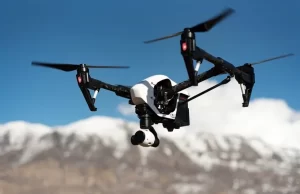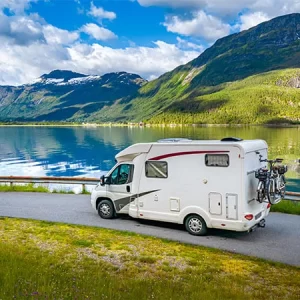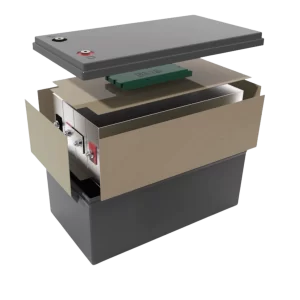9 Ways to Save Energy
1. Adjust your everyday behaviors.
You don’t really have to go out and buy all new energy-efficient appliances. You can add funds to your wallet simply by turning off lights or appliances when you don’t need them. If time allows, you can also change your routine a little – try things like hanging clothes instead of putting them in the dryer or washing dishes by hand.
One big area to focus on is your utility bills…for example, turning down the thermostat in the winter and using the air conditioner less in the summer. Heating and cooling costs nearly half of the average household’s utility bill.
2. Replace your light bulbs.
Having lights is great, but different types of lights use different energy and therefore cost differently. Traditional incandescent bulbs (yellow lights) cost more money than newer incandescent bulbs. Halogen incandescent bulbs, compact fluorescent lamps (CFLs) and light emitting diode bulbs (LEDs) use 25-80% less electricity than traditional bulbs and last 3 to 25 times longer.
Although they are more expensive off-the-shelf, their efficient energy use and longer lifespan means they cost less in the long run. It’s a marathon, not a spirit. When it comes to being good for Mother Earth and your wallet, energy-efficient light bulbs are the clear winner.
3. Use smart power strips.
Have you ever heard of “phantom loading”? This is the electricity used by electronics when they are off or in standby mode. No matter believe it or not… when things don’t go well, they aren’t really not going well. It is a main source of wasted energy. In fact, only estimated up to 75% of the energy used to power home electronics when it’s off! When you add them all, you can run up to $200/year. Smart sockets can solve this problem. We’re all familiar with traditional power strips that have a “terminate button” to turn off the power. The problem is, none of us actually close them. Smart power strips can be set to shut down at specified times, during periods of inactivity, via a remote switch or based on the state of the “master” unit. smart enough, huh?
4. Install a programmable or smart thermostat.
By upgrading to a programmable or smart thermostat, you can set the unit to automatically turn off or reduce heating and cooling when you sleep or leave. Now you have no more waste and less wear and tear on your HVAC system. Makes sense.
If you do a math on average, a programmable thermostat can save you $180 a year. A new thermostat will cost you $20-$70 when you buy it. It’s a great investment. Programmable thermostats come in different models and can be set according to your weekly schedule.
5. Purchase energy efficient appliances.
When you look at home usage by average, appliances use about 13% of a home’s energy. When you’re shopping for an appliance, keep two numbers in mind: the initial purchase price and the annual operating cost. Yes, models with lower annual operating costs may higher than price of the model, but operating costs are typically 9-25% lower than traditional models.
How do you know what you gonna buying? For sure the appliances with the ENERGY STAR label, which is the guarantee issued by the federal government that the appliance uses less energy than older models during use and on standby. Energy saving effects vary by specific equipment. For example, an ENERGY STAR certified washing machine uses 25% less energy and 45% less water than a traditional one, but an ENERGY STAR labeled refrigerator uses only 9% less energy…so through out our example, 13% is used on average.
6. Reduce your water heating expenses.
How about a HOT Shower? Compare with purchasing an energy efficient water heater, there are three ways of reducing your water heating bills:
- Simply use less hot water and time,
- Shut off the thermostat on your water heater,
- Insulate the first six feet of hot and cold water pipes.
Mentioned above 3 things are easy to follow. If you’re considering replacing your water heater with a high-efficiency model, you should keep two things in mind: first, the type of water heater that meets your needs, and second, the type of fuel it will use. For example, tank-less water heaters, while energy efficient, are also a poor choice for house members of 4 or above because they don’t support heavy immediate use with enough hot water. Did you also know – high-efficiency water heaters are 8% to 300% more energy efficient than older water heaters. This can directly reduce your monthly expenses.
7. Upgrade your HVAC system.
Today’s HVAC systems consist of heating, ventilation, and air conditioning equipment. But the reality is that heating alone accounts for more than 40 percent of a home’s energy consumption. Depending on the climate, the northern half of the United States and the southern half of the United States have different specifications for Energy Star gas furnaces.
By upgrading to “U.S. South” ENERGY STAR certification can save you up to 12% on your heating bill, or an average savings of $36 per year. That’s pretty good, right? But ENERGY STAR furnaces in the northern half of the U.S. that bear the standard ENERGY STAR logo are 16% more efficient, or an average annual saving of $94 on heating bills.
When you look at air conditioning, the difference goes not that much — on average, it only accounts for 6% of a household’s total energy consumption. ENERGY STAR central air conditioning units are 8% more efficient.
The last but not least, ventilation – which can also help you save money. A ventilation system consists of a network of ducts that distribute hot and cold air throughout your home. If ductwork is not properly sealed or insulated, it can add hundreds of dollars to your heating and cooling bills each year. Getting things properly insulated and working properly pays off and can cut your heating and cooling bills by up to 20%.
8. Weatherize your home.
Weatherizing or sealing any air leaks around your home is a great way to save money. First look at the common places – vents, windows, and doors. Check to see if there are no cracks or openings between the wall and vent, window, or door frame. If you do see any, you need to seal them.
To seal air leaks between a wall and window, you can apply caulk. For cracks between moving objects, like a sliding windows or doors, you can apply weather stripping. Weather stripping and caulking are simple air sealing ways that typically pay for themselves in less than a year. You can get these at any DIY store. Air leaks can also happen through openings in the wall, floor, and ceiling from plumbing, ducting, or electrical wiring. So check these locations too.
Air leaking also happen a TON in your attic, through small openings. Whether it is through ducts, light fixtures, or the attic hatch, hot air will rise and escape through small openings. As heat moves from warmer to cooler areas, these small openings can make your heating bill even higher if your attic is not insulated well. To make sure you’re getting the best results, you should fully insulating your home.
9. Move towards solar power.
Solar power is here to stay and costs are coming down. According to the most recent report from Google, Solar has seen an 90% decrease in cost per megawatt hour from 2012 to 2020. The chart below shows how solar compares to the other energy sources. This is mostly due to the economy of scale and government programs. And if you accompany that with leaving behind the old lead batteries often used in solar installations and replacing those with Lithium Ion Batteries, then it changes things in a big way. New technology can make a tremendous difference. For example, lithium Ion batteries store solar energy, holds a charge for a year with relatively no maintenance, and can last for more than a decade. You can’t do that with lead acid batteries.
Bonus Tip: Give Lion Energy a try.
We hope these tips will lead you towards achieving an eco-friendly home. Remember, it takes practice, preparation, and perseverance. At DA Lithium, we’re evolving the powering of everyday life with renewable energy.


